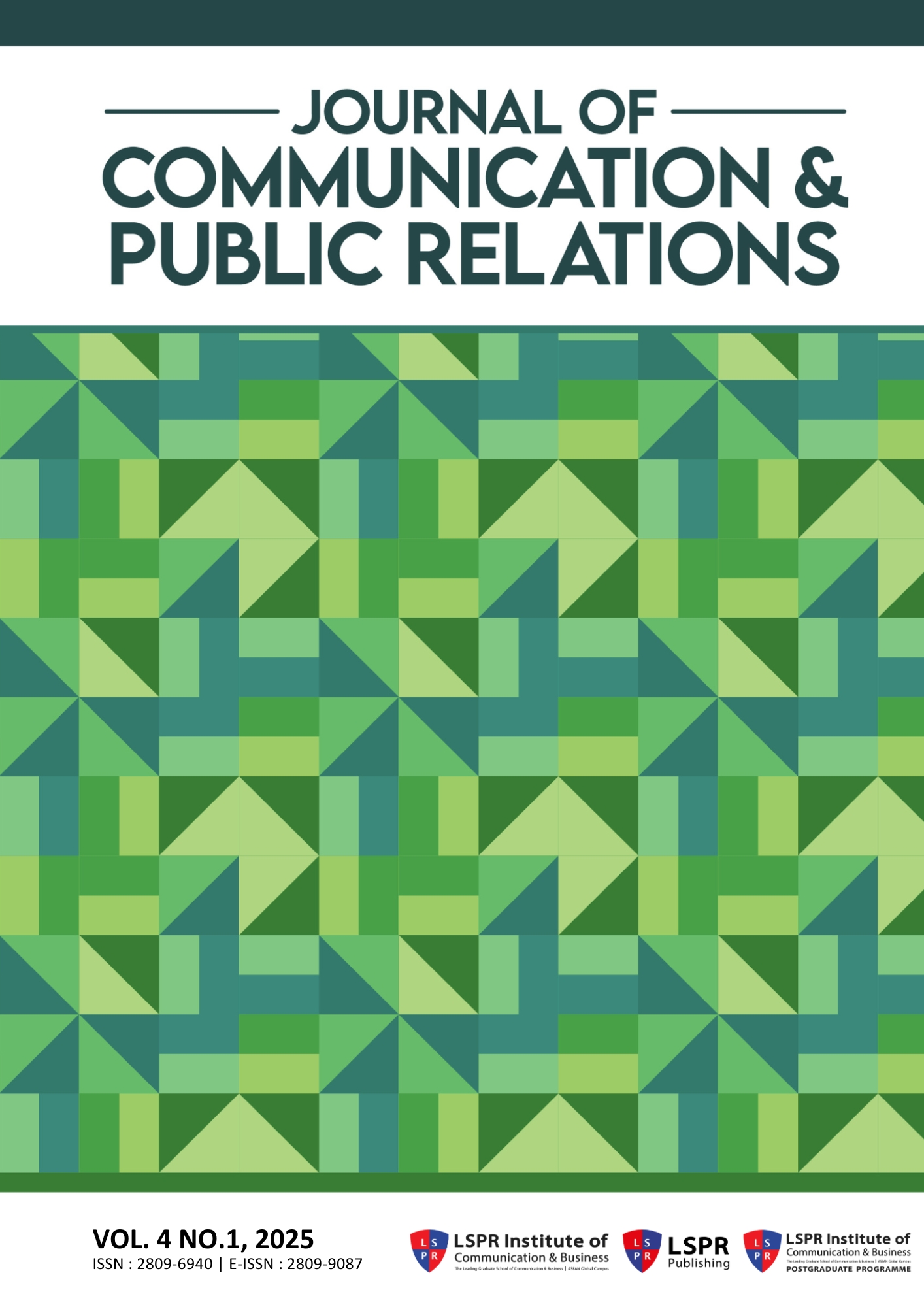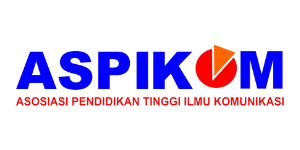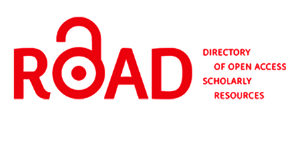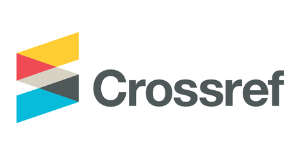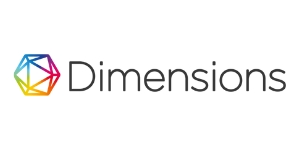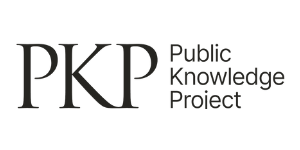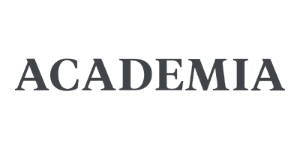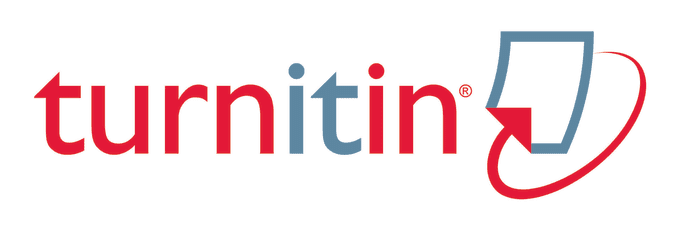An Assessment of Social Media Opportunities in Public Relations Practice at University K and St Paul Universities in Kenya
DOI:
https://doi.org/10.37535/105004120259Keywords:
social media integration, digital communication strategies, organizational engagement, optimizing social media, higher educationAbstract
To ensure adequate public relations in the 21st Century, universities have turned to Social Media in service delivery. Despite the availability and utilization of social media tools, there is still limited understanding of the social media possibilities, especially WhatsApp, Facebook, and Twitter, that private universities in Kenya have not fully harnessed for public relations. This study evaluates the public relations social media opportunities that University K and St. Paul Universities in Kenya have not yet taken advantage of. This research took place from May to July 2022. A mixed methods approach was employed, incorporating a questionnaire and interviews. It involved 270 questionnaire respondents and two in-depth interviews with PR officers from the two selected universities. Quantitative data were analyzed using SPSS v. 23, while qualitative data were analyzed using narrative analysis. The results indicated that social media positively affected service delivery within the Public Relations departments. It was also disclosed that social media aided in promoting their accomplishments, improved information quality, established a user-friendly platform for the public to interact with their organization, increased access to information, and strengthened the organization’s lobbying capacity for public backing of their stances. The research suggests that universities should take advantage of the ample opportunities social media offers to engage with their audiences and assist organizations in expanding their reach for public relations efforts.
References
Al Hadeed, A. Y., Maysari, I., Aldroubi, M. M., Attar, R. W., Al Olaimat, F., & Habes, M. (2024). Role of Public Relations Practices in Content Management: The Mediating Role of New Media Platforms. Frontiers in Sociology, 8. https://doi.org/10.3389/fsoc.2023.1273371
Abdullah, A. Z., Nurmiarani, M., & Sadjijo, P. (2024). Transformasi Media Sosial dalam Praktik Public Relations. Jurnal Pendidikan Dan Ilmu Sosial, 2(4), 251–260. https://doi.org/10.54066/jupendis.v2i4.2268
Adu, J., Owusu, M. F., Martin-Yeboah, E., Pino Gavidia, L. A., & Gyamfi, S. (2022). A Discussion of Some Controversies in Mixed Methods Research for Emerging Researchers. Methodological Innovations, 15(3), 321-330. https://doi.org/10.1177/20597991221123398
Agarwal, V., & Puppala, V. N. (2024). Navigating the Social Media Maze: Assessing the Evolving Relevance of Public Relations in A Digital Landscape. Public Administration and Law Review, 2(18), 34–41. https://doi.org/10.36690/2674-5216-2024-2-34-41
Ahmad, N., Alias, F. A., & Abdul Razak, N. A. (2023). Understanding Population and Sample in Research: Key Concepts for Valid Conclusions. SIG e-Learning@CS, 19-24. https://appspenang.uitm.edu.my/sigcs/2023-2/Articles/20234_UnderstandingPopulationAndSampleInResearch.pdf
Alper, D. Ö. (2024). Public Relations Discourse on X (Twitter) and Analysis of Public Relations. Journal of Communication & Public Relations, 3(1), 14-26. https://doi.org/10.37535/105003120242
Altay, S., Hoes, E., & Wojcieszak, M. (2024). News on Social Media Boosts Knowledge, Belief Accuracy, and Trust: A Field Experiment on Instagram and WhatsApp. https://doi.org/10.31234/osf.io/hq5ru
Andria, H., Shalma, A., & Usman, O. (2024). Analysis of the Influence of Interactive Communication, Consumer Preferences, and Promotional Effectiveness on Purchasing Decisions on the Shopee Live Streaming Features. International Student Conference on Business, Education, Economics, Accounting, and Management (ISC-BEAM), 1(1), 235-247. https://doi.org/10.21009/isc-beam.011.16
Arief, A., Suyuti, S., & Khairan, A. (2022). A Review of Social Media Roles in E-Government. MATEC Web of Conferences, 372, 04001. https://doi.org/10.1051/matecconf/202237204001
Assegaff, S. B., Fajarini, E. S., Herari, N., & Setiawati, A. (2024). Message Reception Analysis in Intercultural Communication during "Magnetic Resonance Imaging" Training in Hospitals. Jurnal Komunikasi Ikatan Sarjana Komunikasi Indonesia, 9(1), 211-225. https://doi.org/10.25008/jkiski.v9i1.1010
Aydoğan, H. (2021). Dialogic Communication during COVID-19 Pandemic: An Analysis on Technoparks’ Social Media Usage in Turkey. Connectist: Istanbul University Journal of Communication Sciences, 0(60), 1-26. https://doi.org/10.26650/connectist2021-000126
Bell, E., Bryman, A., & Harley, B. (2022). Mixed methods research: Combining quantitative and qualitative research. Business Research Methods. https://doi.org/10.1093/hebz/9780198869443.003.0040
Bruce, P.C., Gedeck, P. and Dobbins, J. (2024). Surveys and Sampling. In Statistics for Data Science and Analytics (eds P.C. Bruce, P. Gedeck and J. Dobbins). https://doi.org/10.1002/9781394253838.ch7
Bryman, A. (2008). Why do researchers integrate quantitative and qualitative research? In M. Bergman (Ed.), Advances in mixed methods research, 21(8), 87-100.
Bryman, A. (2012). Social research methods, 4th Ed. Oxford, UK: Oxford University Press.
Contri, M., Fissi, S., & Gori, E. (2023). Citizen engagement and dialogic accounting through social media: a study of Italian regions. https://doi.org/10.1108/aaaj-02-2022-5663
Dodds, T., de Vreese, C., Helberger, N., Resendez, V., & Seipp, T. (2023). Popularity-driven Metrics: Audience Analytics and Shifting Opinion Power to Digital Platforms. Journalism Studies, 24(3), 403–421. https://doi.org/10.1080/1461670X.2023.2167104
El-Kasim, M. (2020). Nigerian Public Relations Practitioners’ Use of Social Media: Validation of an Online Interactivity Model Applying Structural Equation Modeling. Media Watch, 11(2). https://doi.org/10.15655/MW/2020/V11I2/195653
Grunig, J.E. (2009). Paradigms of global Public Relations in an age of digitalisation. [Online]. PRism, 6(2). Available at: http://praxis.massev.ac.nz/prism on-line iourn.html [accessed 15 April 2013].
Guillaumie, L., Vézina‐Im, L., Bourque, L., Boiral, O., Talbot, D., & Harb, E. (2024). Best Practices for Municipalities to Promote Online Citizen Participation and Engagement on Facebook: A Narrative Review of the Literature. Advances in the Social Sciences, 13(3), 127. https://doi.org/10.3390/socsci13030127
Hands, A. S. (2022). Integrating quantitative and qualitative data in mixed methods research: An illustration. The Canadian Journal of Information and Library Science, 45(1), 1-20. https://doi.org/10.5206/cjilsrcsib.v45i1.10645
Hannoka, A. (2023). Social Media as A Tool in Investor Relations [Doctoral dissertation]. https://jyx.jyu.fi/bitstream/handle/123456789/88057/1/URN%3ANBN%3Afi%3Ajyu-202306264112.pdf
He, J., Lin, Y., Hooimeijer, P., & Monstadt, J. (2024). Measuring social network influence on power relations in collaborative planning: A case study of Beijing City, China. Cities. https://doi.org/10.1016/j.cities.2024.104866
Ingenhoff, D., & Koelling, A. M. (2009). The potential of websites as a relationship-building tool for charitable fundraising NPOs. Public Relations Review, 35(1), 66-73. https://doi.org/10.1016/j.pubrev.2008.09.023.
Iseselo, M. K., & Tarimo, E. A. M. (2024). Comprehension of informed consent and voluntary participation in registration cohorts for phase IIb HIV vaccine trial in Dar Es Salaam, Tanzania: a qualitative descriptive study. BMC Medical Ethics, 25. https://doi.org/10.1186/s12910-024-01033-z
Jeswani, R. (2023). The role and importance of social media marketing in brand building. Irish Interdisciplinary Journal of Science & Research, 07(04), 01-09. https://doi.org/10.46759/iijsr.2023.7401
Kim, M. J. (2024). Enhancing Professional Awareness of Informed Consent: Safeguarding the Rights of Patients and Practitioners. Journal of Korean Neurosurgical Society. https://doi.org/10.3340/jkns.2024.0121
Kwamboka, J. (2024). Role of Social Media in Stakeholder Engagement in Universities in Kenya. International Journal of Social Science and Humanities Research-MIYR. https://doi.org/10.61108/ijsshr.v2i1.86
Koç, T., & Akbiyik, A. (2020). Social Network Sites (SNS) and Their Irrepressible Popularity: Can They Really Cause an Addiction? In Managing Social Media Practices in the Digital Economy (pp. 234-263). https://www.researchgate.net/publication/338314665_Social_Network_Sites_SNS_and_Their_Irrepressible_Popularity_Can_They_Really_Cause_an_Addiction
Lucas, B. D. (2024). Adoption and use of Social Media for Engagement by Public Relations Professionals in Broadcasting Organisations in Plateau State, Nigeria. London Journal of Research in Humanities & Social Science, 24(13), 51-68. https://journalspress.com/LJRHSS_Volume24/Adoption-and-use-of-Social-Media-for-Engagement-by-Public-Relations-Professionals-in-Broadcasting-Organisations-in-Plateau-State-Nigeria.pdf
Nayak, B. C., Nayak, G. K., & Jena, D. (2020). Social recognition and employee engagement: The effect of social media in organizations. International Journal of Engineering Business Management, 12, 184797902097510. https://doi.org/10.1177/1847979020975109
Nuzirwan, I. ., & Sukandar, R. (2024). The Impact of Hoaxes to the Business of Information Technology Companies in Indonesia. Journal of Communication and Public Relations, 1(1), 41–50. Retrieved from https://journal.lspr.edu/index.php/jcpr/article/view/363
Rijal, S., Almaududi Ausat, A. M., & Siminto. (2024). The role of social media in enhancing social awareness and community participation in education. Indo-MathEdu Intellectuals Journal, 5(2), 2385-2398. https://doi.org/10.54373/imeij.v5i2.1067
Samwel, N. N., & Lando, A. L. (2022). Impact of Social media Use on Public relations Practice in Select Private Universities in Kenya. East African Journal of Information Technology, 5(1), 180–193. https://doi.org/10.37284/eajit.5.1.949
Sarjito, A. (2023). The Influence of Social Media on Public Administration. Jurnal Terapan Pemerintahan Minangkabau. https://doi.org/10.33701/jtpm.v3i2.3378
Scoble, R., & Israel, S. (2006). Naked Conversations: How blogs are changing the way businesses talk with customers. Hoboken, NJ: John Wiley & Sons, Inc.
Shi, H. (2022). Communication with Internal and External Stakeholders (pp. 81–91). Routledge eBooks. https://doi.org/10.4324/9781003147480-7
Siegel, A. F., & Wagner, M. R. (2022). Chapter 8 - Random Sampling: Planning Ahead for Data Gathering. In Practical Business Statistics (Eighth Edition) (1st ed., pp. 205-235). Academic Press.
Sweetser, K. D., & Metzgar, E. (2007). Communicating during crisis: Use of blogs as a relationship management tool. Public Relations Review, 33(3), 340–342.
Trammell, K. D., & Keshelashvili, A. (2005). Examining the new influencers: A self-presentation study of A-list blogs. Journalism & Mass Communication Quarterly, 82(4), 968-982. https://doi.org/10.1177/107769900508200413
Willie, M. M. (2023). Distinguishing between population and target population: A mini review. Surgery Research Journal, 3(2). https://doi.org/10.33425/2768-0428.1027
Wright, D. K., & Hinson, M. D. (2008). How Blogs and Social Media are Changing Public Relations and the Way it is Practiced. Public Relations Journal, 2(2). http://www.muhammadsaleem.com/wp-content/uploads/2009/02/wrighthinson.pdf
Zaiats, O. (2024). The role of social media in public administration and management: interaction channels and their effectiveness. Ekonomìčnì Gorizonti, 2-3(28), 169–178. https://doi.org/10.31499/2616-5236.3(28).2024.308214

